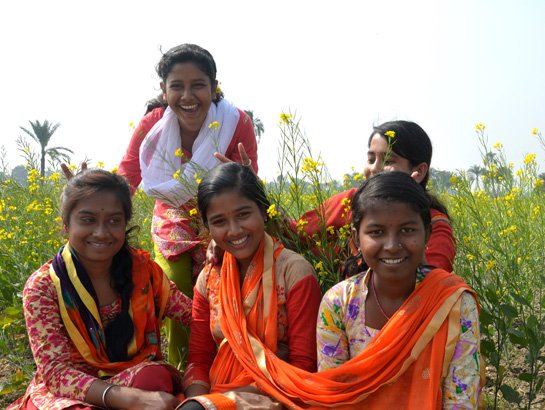A newly published study showed that Indian adolescents who improved their nutrition by eating iron-biofortified pearl millet spent more time being active—walking, doing chores, or playing games—than adolescents who ate conventional, non-biofortified pearl millet.
The lead publication author, Laura Pompano, said: “These findings reinforce the benefits of staple crop biofortification and their potential to have life-changing health and nutrition impacts, especially for vulnerable populations that are not reached by other nutrition interventions.”
The study, “Iron-biofortified Pearl Millet Consumption Increases Physical Activity in Indian Adolescent School Children (2021),” compared the effect of consuming Dhanashakti Iron Pearl Millet (IPM) and conventional pearl millet (PM) on “voluntary physical activity” (time spent in light, moderate, or vigorous physical activities) as well as sedentary behaviors. Dhanashakti is a biofortified IPM variety available in India to help meet the dietary needs of its malnourished population.
After six months of eating IPM, adolescents spent an average of 22 more minutes a day walking, doing chores, playing recreational soccer, dancing with friends, or doing other light activities than children who ate conventional PM. There was no effect observed from IPM consumption on moderate-to-vigorous activity.
Physical activity is positively associated with healthy blood pressure, insulin resistance, and lower cholesterol levels, factors that can help mitigate the rising double burden of malnutrition and diet-related noncommunicable diseases. Spending more time doing light physical activities rather than being sedentary may also result in additional positive impacts on motor skills and academic potential.
The study included 130 Indian school children (ages 12-16 years old) living at a boarding school in Ahmedpur district of Maharashtra, India. As part of a randomized controlled study, the adolescents were randomly assigned to one of two groups, eating bhakri (a flat, unleavened bread) made of either biofortified or conventional pearl millet twice daily for six months. This was the first scientific attempt to bridge the knowledge gap about the impact of consuming iron-biofortified staple foods on voluntary physical activity in adolescents.
The results also showed that the amount of iron consumed was directly related to light physical activity levels and inversely related to daily sedentary minutes: those who consumed more iron were more active and spent less time sedentary.
Physical activity data were collected over three weeks at baseline and end-line using accelerometers—devices worn on a belt by the participants that measured motion. Each participant was instructed to wear the accelerometer at all times, except when sleeping or bathing. Data were collected for six consecutive days from Tuesday through Sunday. No data were collected on Mondays, which were reserved for collecting and downloading data, and recharging batteries.
Participants in the PM group consumed an average of 7.3 mg/day (64% of the daily estimated average requirement for iron) over the six-month trial, while participants in the IPM group consumed an average of 12.8 mg/day (over 100% of the average daily iron requirement).
The 130 participants in the study were a subsample from a larger parent study involving 246 children; they were selected because they had the lowest iron levels at the start of the study, and therefore the greatest potential to benefit from eating IPM. The 2015 parent study, “A Randomized Trial of Iron-Biofortified Pearl Millet in School Children in India,” concluded that children who ate biofortified IPM bhakri were 1.6 times more likely to have resolved their iron deficiency when compared with those who ate bhakri made from ordinary PM.
Diets lacking in iron hamper brain development and learning capacity and cause weakness and fatigue. When iron deficiency leads to anemia, it can result in negative pregnancy outcomes, including maternal mortality. India suffers from the highest prevalence of anemia in the world, with about 40 percent of the population affected. Despite global efforts to curb iron deficiency through initiatives including supplements and fortified foods, it remains the most widespread nutrition deficiency in the world, affecting 1.6 billion people.
Pearl millet is a staple crop for many communities in several states throughout India. As of 2010, three states accounted for 90 percent of pearl millet production and consumption: Gujarat, Haryana, and Rajasthan. Other stateswhere the crop is often consumed include Karnataka, Maharashtra, and Uttar Pradesh. In a country where two-thirds of all children under five are iron-deficient, iron pearl millet represents hope for better nutrition and health. More than a million Indian farmers have embraced the variety.
IPM has the potential to reduce iron deficiency at scale in states with high pearl millet consumption. HarvestPlus has thus been actively developing biofortified varieties of IPM to combat ‘hidden hunger’ in India.
